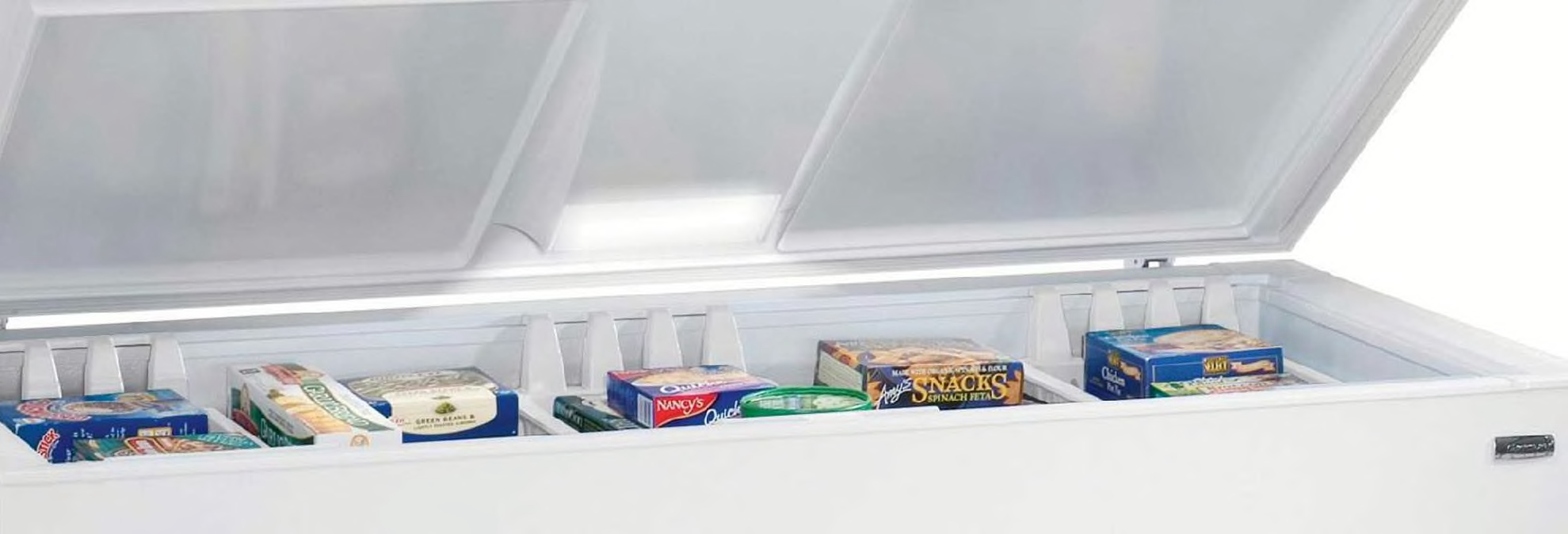
How to Choose the Best Freezer for Your Home


Senior Home & Appliances Writer
Maybe you’ve always been someone who plans ahead—making an extra pan of lasagna and sticking it in the freezer or stocking up on groceries at the warehouse club. Or maybe with food prices ticking up, you’re looking for ways to take advantage of any bargains you find.
If you’re looking for a standalone freezer, you should first decide whether a chest freezer or an upright one will meet your needs—and fit your available floor space. Next, consider size, capacity, and energy use. To help you, we’ve subdivided our freezer ratings by size (small, medium, and large) and type (chest or upright), so you can compare freezers of the same or similar capacity by features and price.
One thing to keep in mind as you shop is that freezers are basically big empty boxes and can be hard to organize. But some manufacturers are adding smart storage features—tiered bins, adjustable drawers and shelves—that make it easier to find what you’re looking for.
Here are the types of freezers you’ll find on the market and the pros and cons of each. For detailed test results, see our full freezer ratings and recommendations.
Standalone Freezer Types
When it comes to the two most popular categories of freezers—upright and chest models—we find that there’s no clear winner. Below, we consider each type. Other options include freezer drawers and portable freezers, but they’re much less popular, and we don’t test them.
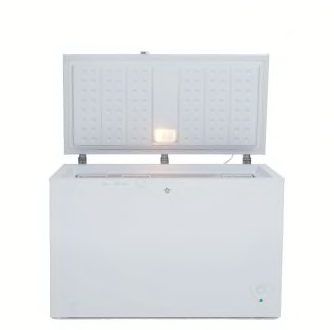
Chest Freezers
Pros: The interior of a chest freezer is wide open, except for removable hanging baskets or, sometimes, dividers, so it offers more usable space than an upright. These models also tend to be slightly more energy-efficient and are less likely to cause freezer burn on food. Because they generally don’t self-defrost like uprights, the temperature stays consistently lower. They’re also the better choice if the area where you live is prone to brownouts or power failures because they tend to keep food frozen longer than uprights when the power is off.
Cons: Despite having hanging baskets, they can be harder to organize than upright models, and retrieving items buried near the bottom of the chest can be a reach. Their footprint is also larger than equivalent upright models. A 22-cubic-foot chest freezer takes up a 2x6-foot area vs. the 2½x2½-foot area of an upright of the same size. And most chest freezers need to be defrosted manually, which can be time-consuming.
Price: From about $200 to $1,200.
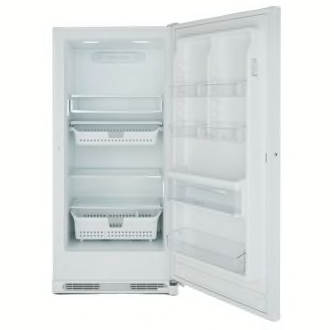
Upright Freezers
Pros: Uprights take up less floor space than chest freezers—2½ square feet for 22 cubic feet of storage compared with a chest’s typical 2x6 feet. They’re also easier to organize. As with a fridge, shelves and bins inside and on the door make it easy to find things. You have the option of manual or self-defrost (also called frost-free) models. Manual defrosting takes hours, and you have to empty the freezer. But self-defrost freezers allow temperatures to rise temporarily, which might compromise performance. Unlike chest freezers, uprights are available in a variety of finishes, such as slate and stainless steel.
Cons: In our tests, manual-defrost uprights have a hard time keeping their door shelves as cool as the rest of the interior. Self-defrost uprights tend to be noisy and may cost more to run. They also allow more air to circulate around food, making it more likely to get freezer burn. In our power failure simulation, all uprights allowed a relatively large temperature uptick after only 9 hours. And the shelves and bins in uprights take up more space (up to 20 percent) than in chest types.
Price: Usually higher than chest models, from $350 to $2,000.
Video Buying Guide
For more, watch our freezer buying guide video below.
How CR Tests Freezers
To test freezers, our engineers fill each model with boxes of frozen spinach and run them in our test chambers for about six weeks to evaluate how well they keep the packages frozen.
The results allow us to judge their thermostat control and temperature uniformity (the ability to maintain the same temperature throughout the freezer cavity). Our engineers also measure usable storage capacity, which doesn’t always match what manufacturers claim.
In addition, we calculate energy efficiency, evaluate noise output, and judge how long a freezer can keep food frozen during a power outage. All of this data is folded into an Overall Score for each model and appears in our freezer ratings charts.
The Coolest Features
Freezers are an appliance with a pretty straightforward purpose, but some options can make them more convenient to use (although options may bump up the price).
- 1
- / 8
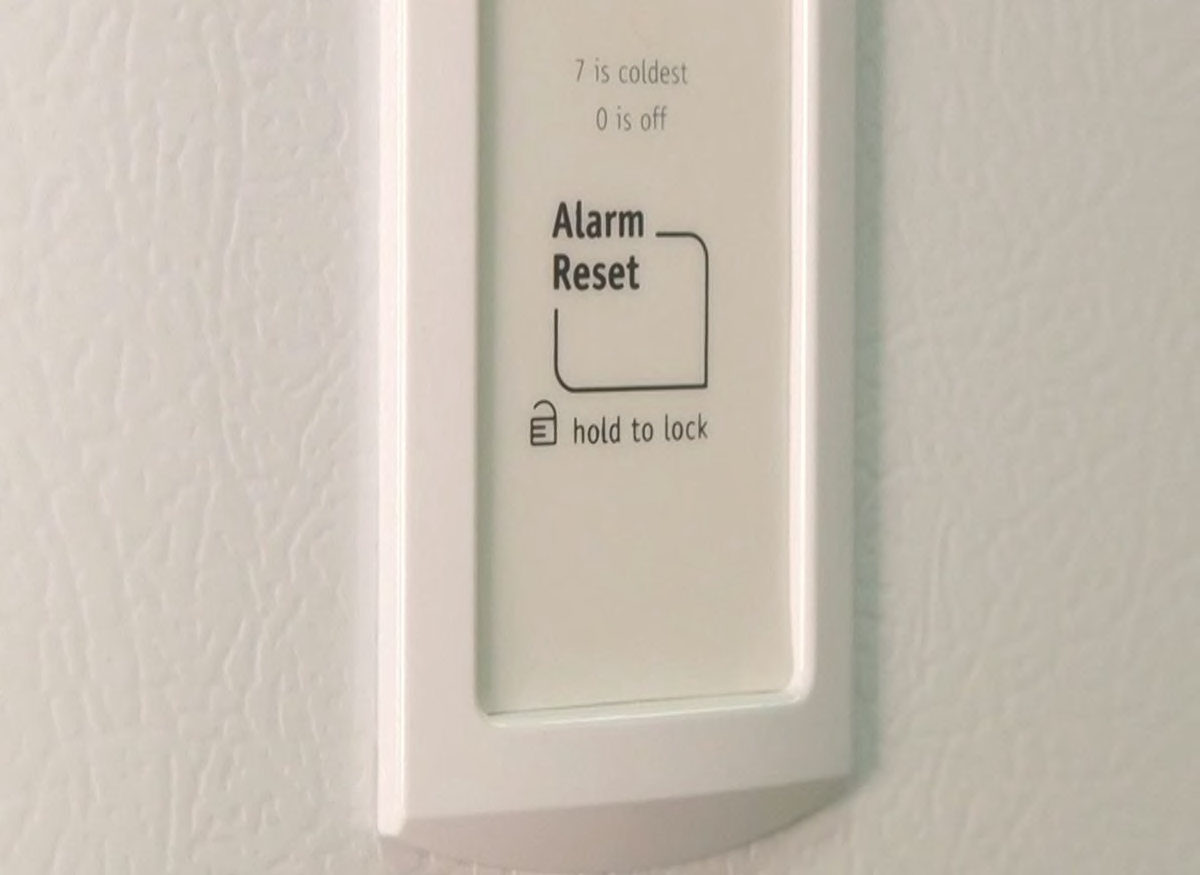
Alarm
Some self-defrosting upright freezers we tested beep if their interior gets too warm.
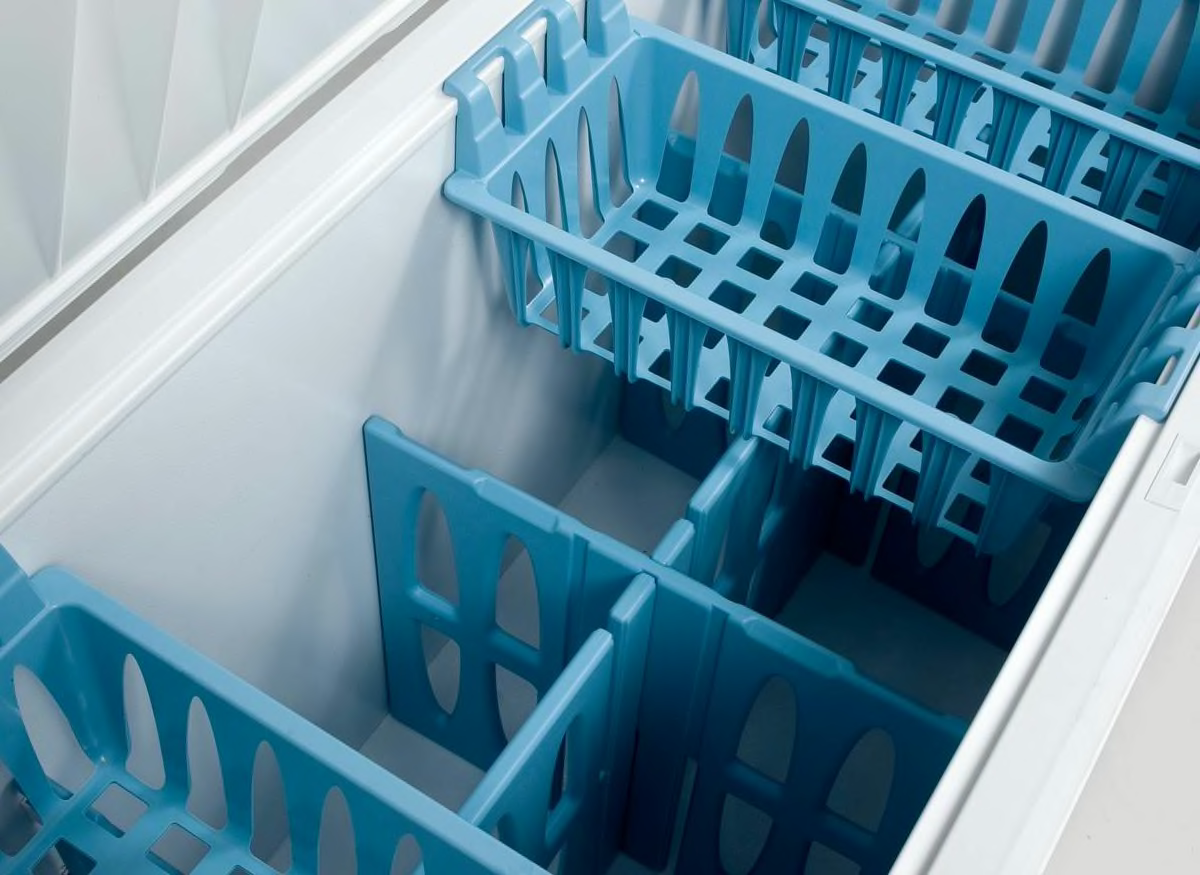
Compartment Dividers and Tiered Bins
In chest freezers, upright plastic dividers and sliding bins on racks help organize stored food.
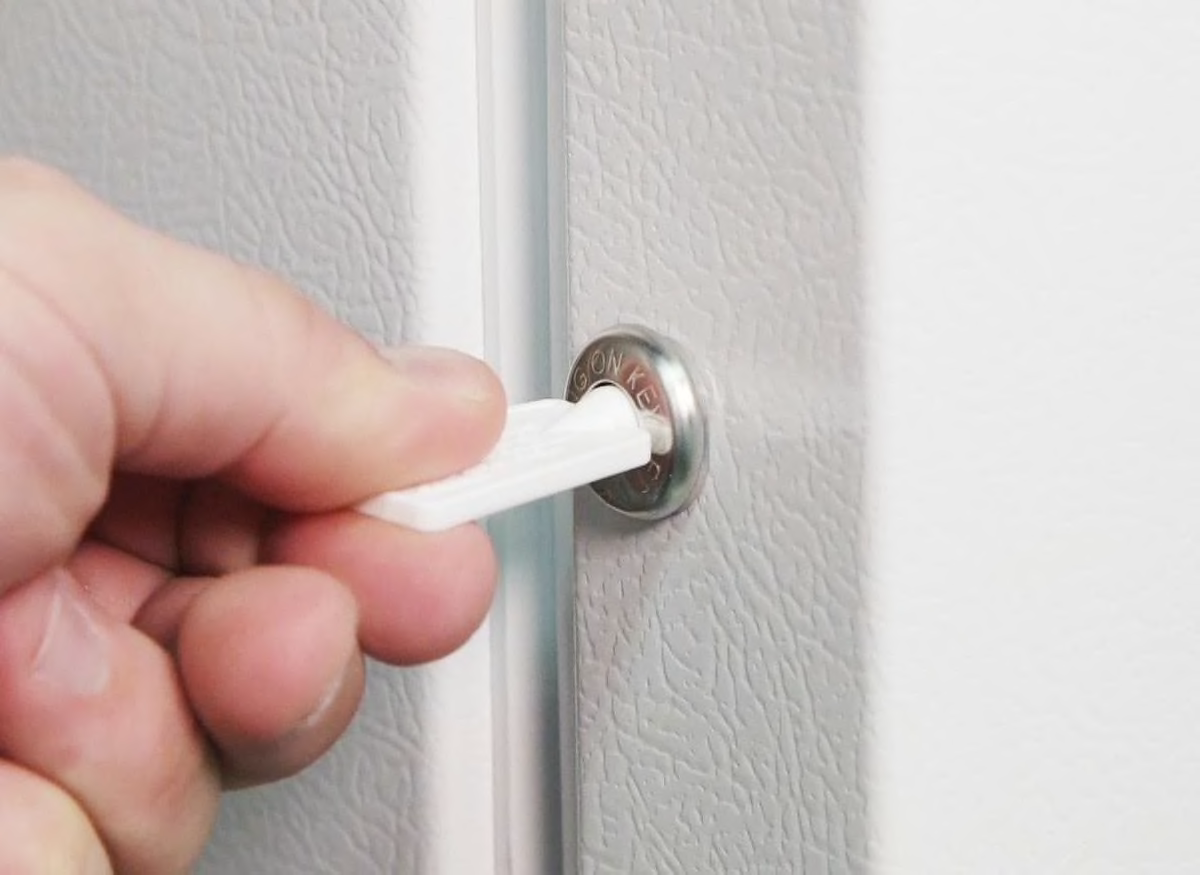
Door Lock
We found some freezers equipped with this feature (useful if there are kids in the house), which blocks access or keeps the door from being left open.

Manual vs. Self-Defrost
Manual-defrost freezers (largely the only option for chest models) are generally more energy-efficient and less likely to cause freezer burn than self-defrosting models. (Uprights can be manual- or self-defrosting.) It’s wise not to let ice build up on freezer walls, which can decrease efficiency and increase your energy bill. It’s worth noting that defrosting can take hours. On the con side, manual-defrost uprights had trouble keeping their door shelves as cool as the rest of the interior, with temperature differences ranging from 9º F to 19º F in our tests. Self-defrosting uprights did a better job of keeping their door shelves as cool as the rest of the freezer, and they save you the hassle of manually defrosting.
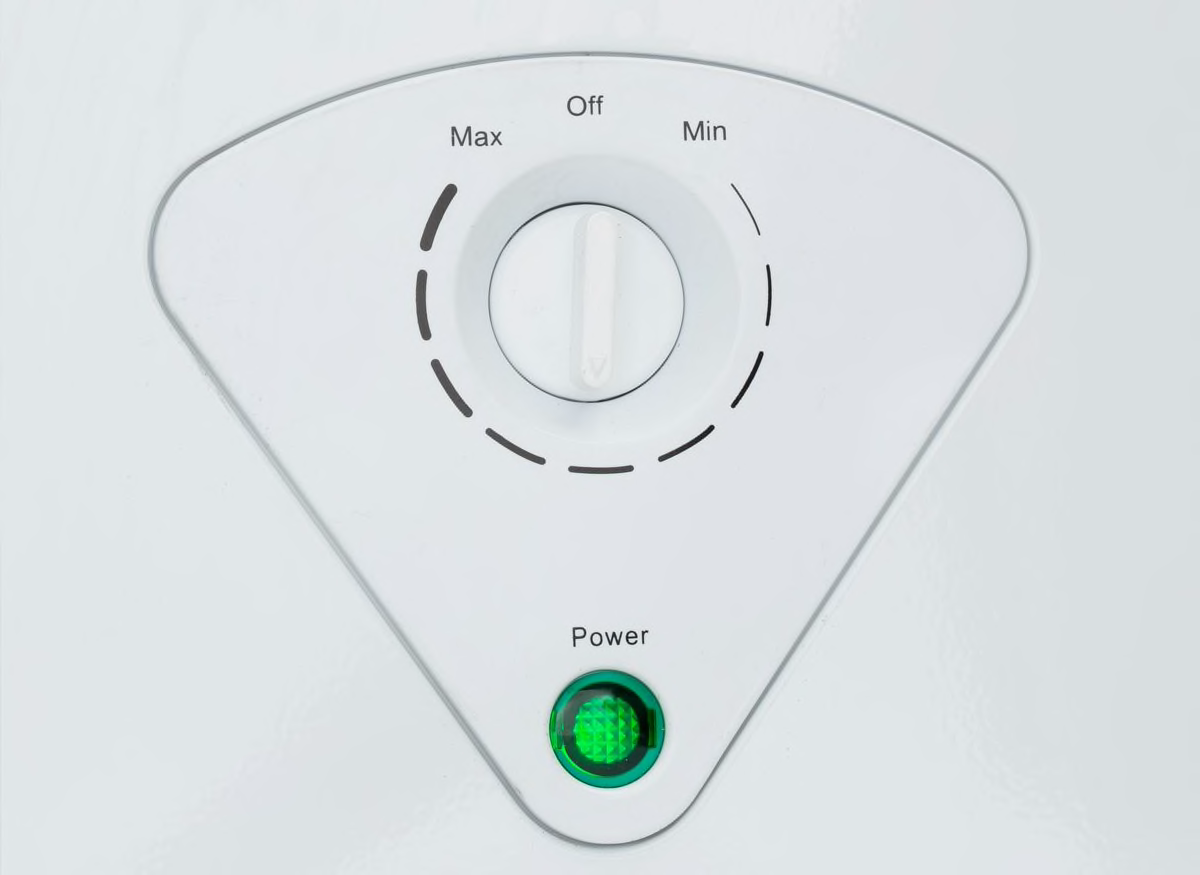
Power-On Light
You can see at a glance whether the freezer is on without opening the door and letting cold air escape. Most models have this feature, and we think it should be universal.
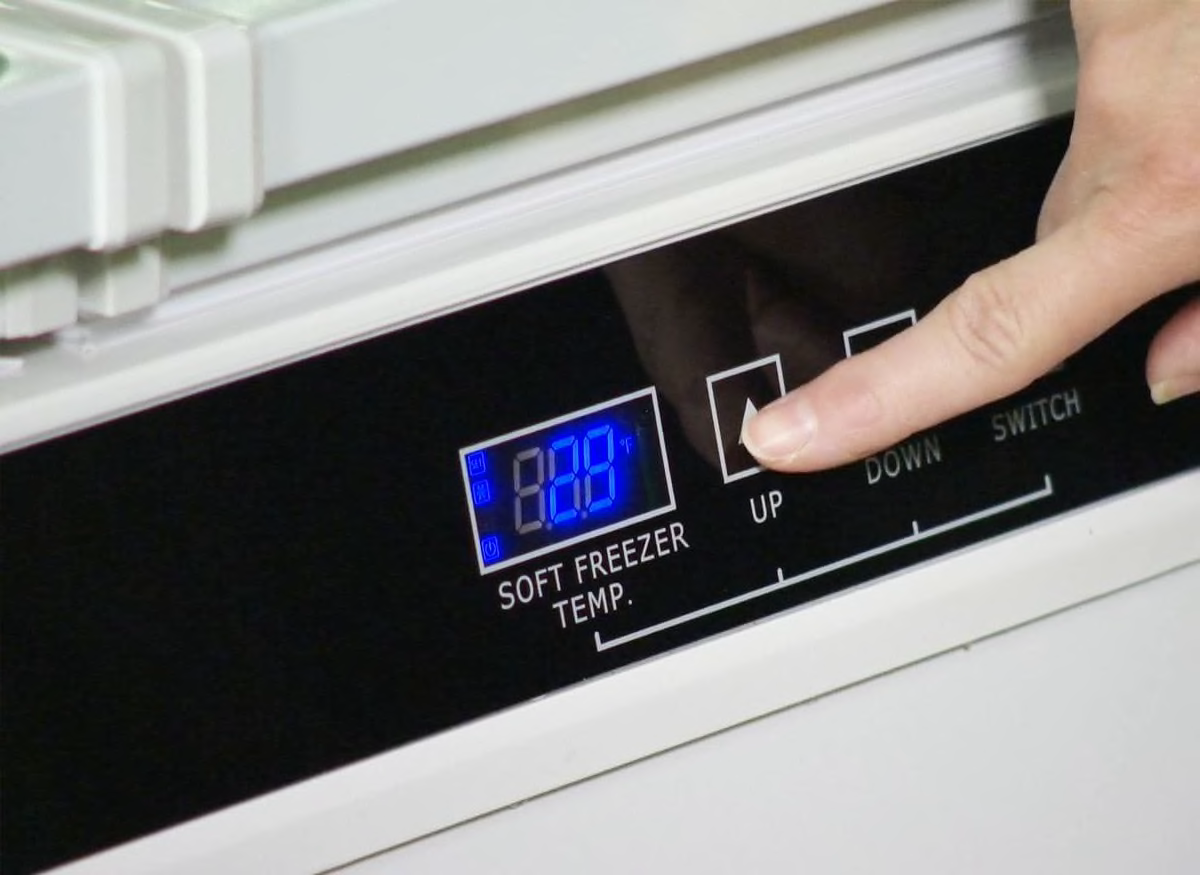
Quick-Freeze and Soft-Freeze Options
Some uprights can cool large quantities of food more quickly. Other freezers have a soft-freeze option, handy if you can’t bear to wait for rock-hard ice cream to melt.
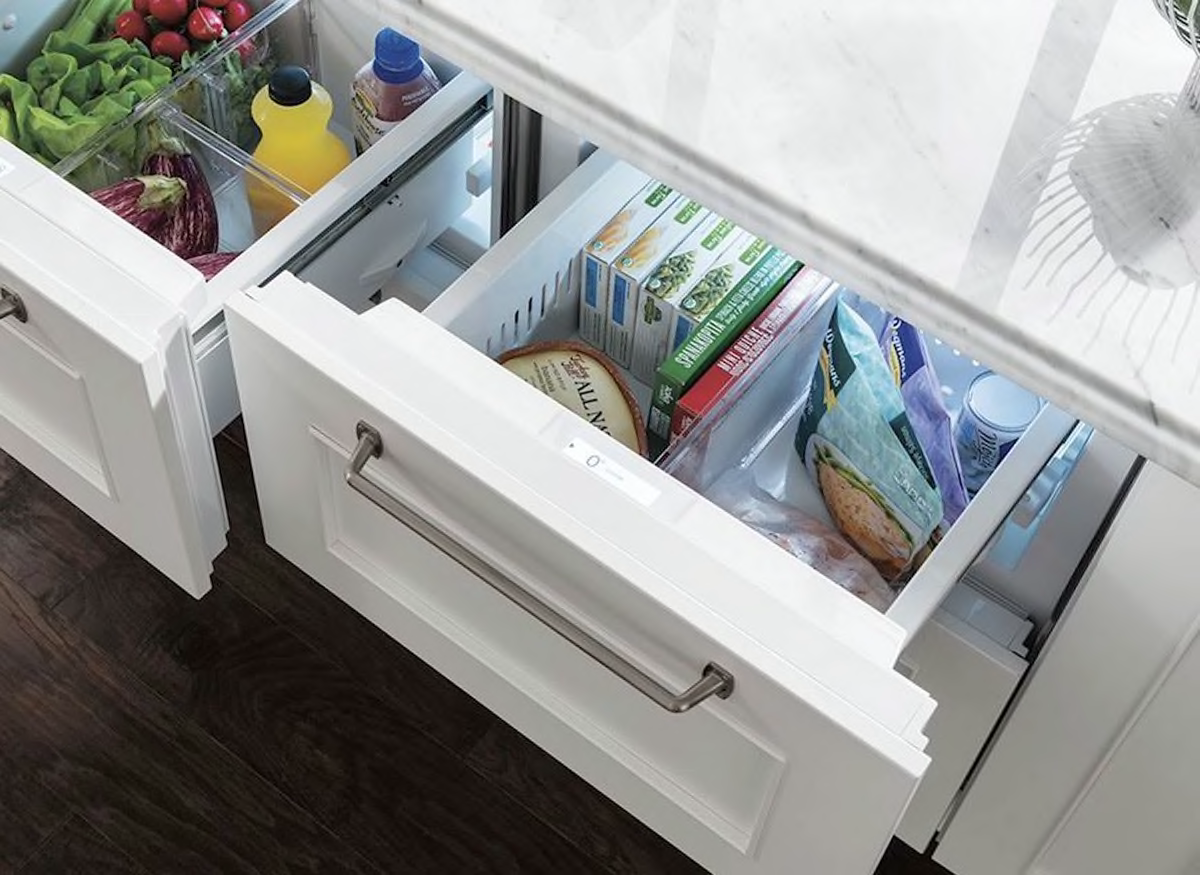
Freezer Drawers
Pull-out freezer drawers are popping up in high-end kitchens, usually to supplement the freezer in a standard fridge. They can match the cabinetry or have a stainless pro-chef look. They’re pricey, running $2,000 to $6,000, and are typically available in 24-inch and 30-inch widths.
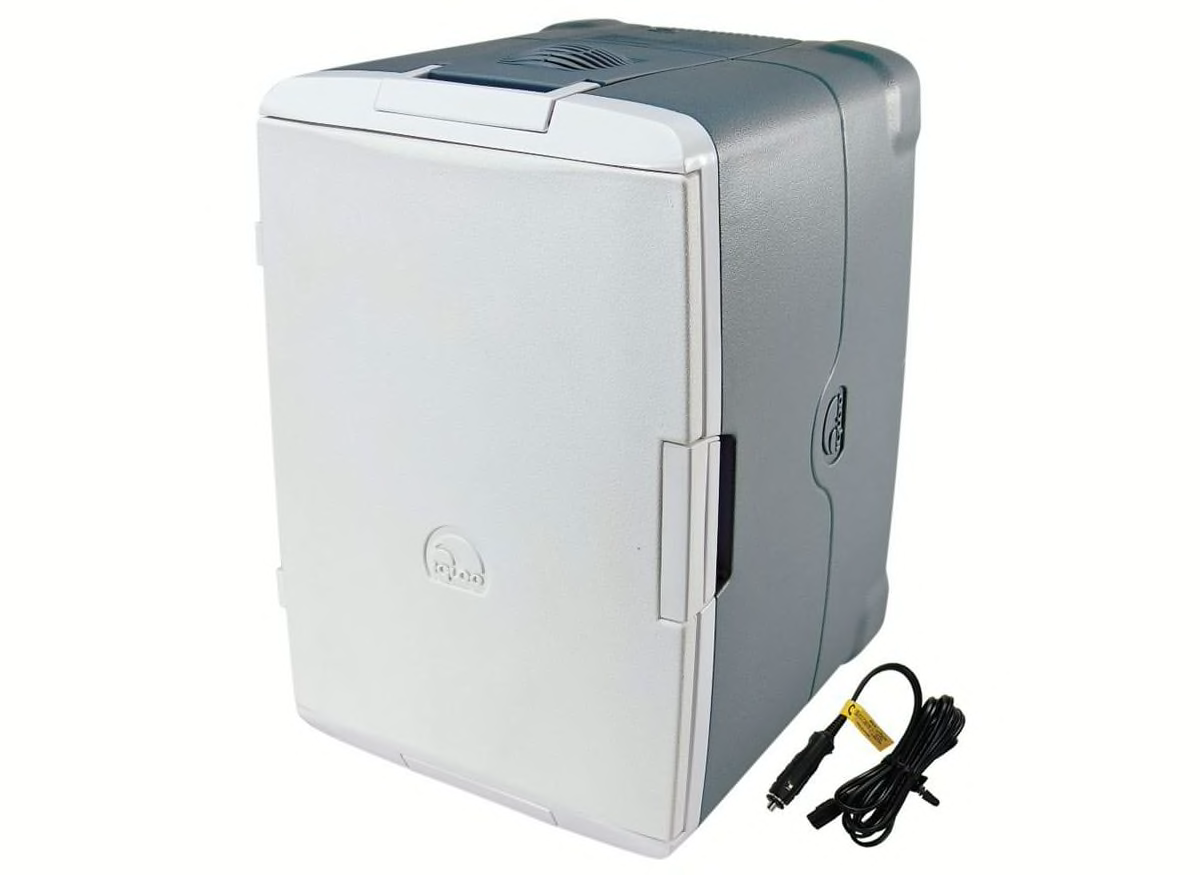
Recreational Freezers
Portable freezers for boating or camping require a standard 110-volt household outlet or a 12-volt power source (like a car battery). Some hold up to 85 quarts and are equipped with wire baskets to organize food. They can be adjusted to refrigerate as well. There aren’t many companies making these, and we’ve found the smaller ones to be less efficient.
PHOTO: IGLOO
Alarm
Some self-defrosting upright freezers we tested beep if their interior gets too warm.
Compartment Dividers and Tiered Bins
In chest freezers, upright plastic dividers and sliding bins on racks help organize stored food.
Door Lock
We found some freezers equipped with this feature (useful if there are kids in the house), which blocks access or keeps the door from being left open.
Manual vs. Self-Defrost
Manual-defrost freezers (largely the only option for chest models) are generally more energy-efficient and less likely to cause freezer burn than self-defrosting models. (Uprights can be manual- or self-defrosting.) It’s wise not to let ice build up on freezer walls, which can decrease efficiency and increase your energy bill. It’s worth noting that defrosting can take hours. On the con side, manual-defrost uprights had trouble keeping their door shelves as cool as the rest of the interior, with temperature differences ranging from 9º F to 19º F in our tests. Self-defrosting uprights did a better job of keeping their door shelves as cool as the rest of the freezer, and they save you the hassle of manually defrosting.
Power-On Light
You can see at a glance whether the freezer is on without opening the door and letting cold air escape. Most models have this feature, and we think it should be universal.
Quick-Freeze and Soft-Freeze Options
Some uprights can cool large quantities of food more quickly. Other freezers have a soft-freeze option, handy if you can’t bear to wait for rock-hard ice cream to melt.
Freezer Drawers
Pull-out freezer drawers are popping up in high-end kitchens, usually to supplement the freezer in a standard fridge. They can match the cabinetry or have a stainless pro-chef look. They’re pricey, running $2,000 to $6,000, and are typically available in 24-inch and 30-inch widths.
Recreational Freezers
Portable freezers for boating or camping require a standard 110-volt household outlet or a 12-volt power source (like a car battery). Some hold up to 85 quarts and are equipped with wire baskets to organize food. They can be adjusted to refrigerate as well. There aren’t many companies making these, and we’ve found the smaller ones to be less efficient.
PHOTO: IGLOO
What to Think About When Buying a Freezer
Standalone freezers used to be all about utility, with no-frills designs and an open-box interior that made it a challenge to keep food organized. Those bare-bones freezers are still available—and many of them do well in our freezer ratings—but we’re also seeing a lot of improvements to the look and functionality of freezers. Consider these factors before you hit the store:
Location, Location
If you plan to keep the freezer in a living area, consider how noisy it is (and also how it looks). Most manufacturers say that their freezers can operate in a room where the temperature can reach up 110° F, but check product specifications if you plan to put the freezer in area that’s not temperature-controlled, such as a garage. Make sure the unit isn’t exposed to temperatures above 110° F or below 0° F, because that may damage it.
Freezers Come in 3 Sizes
Freezers, whether chest or upright, come in three basic sizes: compact or small (5 to 9 cubic feet), medium (12 to 18 cubic feet), and large (more than 18 cubic feet). Upright freezers have a smaller footprint for the equivalent storage space.
What If the Power Goes Out?
Most manufacturers claim that their freezers can keep food adequately frozen for 24 hours with the power off, as long as the freezer remains unopened. But our tests simulating a prolonged power failure showed that some uprights allowed a relatively large increase in temperature after only 9 hours.
Temperature Control
Most of the freezers in our tests maintained a consistent temperature. Manual-defrost uprights were the exception. Without fans to circulate cold air, temperatures of on-the-door shelves were between 9° F and 19° F higher than in the rest of the freezer.
Help Your Freezer Work Better
Once you’ve gotten your freezer, you may want to give it a little help keeping its cool—and making food last longer. Check out these simple tips from our experts:
Save Energy
Keeping your freezer in a cool spot, such as the basement, where it tends to stay well below normal room temperatures, can save money on your electric bill. That said, most manufacturers say models will operate in temperatures up to 110° F if needed, but you should check the product specifications to be sure.
Minimize Frost
Keep the lid or door closed as much as possible. Take an inventory of what’s inside so that you don’t have to hunt around. Label food well for the same reason.
Store Food Correctly
Repackaging food in several layers of plastic wrap helps reduce moisture loss and freezer burn. Some other common freezing rules: You can freeze ground beef for up to four months and a whole chicken for as much as a year. A pack of hot dogs should stay frozen only for one to two months.



























